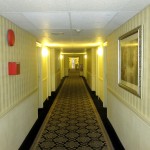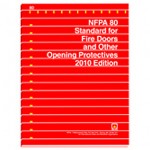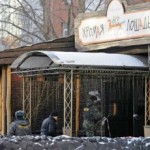Another Hotel
I don't stay in flea-bag motels - I really don't. That's why it amazes me that almost every hotel I stay in has extreme issues with their fire doors. I'm on a short vacation with my family, and as you can see from the graphic on the right, the resort consists of several connected 2-story buildings with a total of 256 guest rooms. The only rooms that are equipped with sprinklers are the rooms that have fireplaces - if I had known that I might have sprung for the upgrade.












































